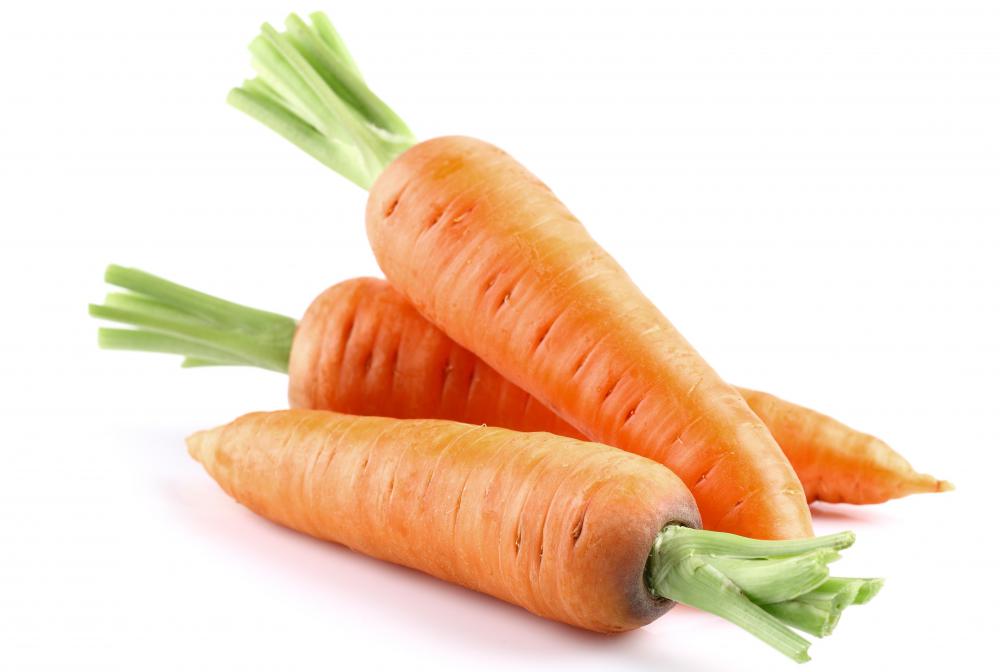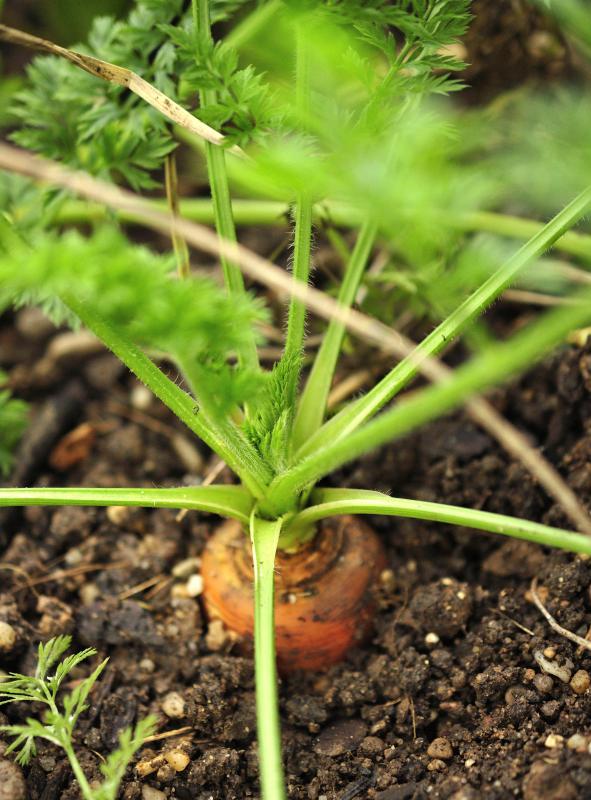At AllThingsNature, we're committed to delivering accurate, trustworthy information. Our expert-authored content is rigorously fact-checked and sourced from credible authorities. Discover how we uphold the highest standards in providing you with reliable knowledge.
What Is Wild Carrot?
Wild carrot, Daucus carota, is a plant native to Europe and Asia which has been introduced into other parts of the world, including North America where it has naturalized and grows wild. It is typically found in all US states except Alaska and Hawaii, and all of Canada except Alberta and the territories. Wild carrot thrives in many soil and moisture conditions and grows readily where the natural vegetation has been disturbed. It is classified as a noxious weed in many areas where it grows.
Common names for Daucus carota, in addition to wild carrot, include birds nest, bishop's lace and, in North America, Queen Anne's lace. In Europe Queen Anne's lace normally refers to Anthriscus sylvestris, also called cow parsley. Wild carrot is a member of the Apaiaceae, also called Umbelliferae, family, and is closely related to parsnips and parsley. It was the ancestor of the familiar domestic carrot, which is botanically considered a sub-species of Daucus carota.

Wild carrot is usually a biennial plant, which means it grows over two seasons. In some areas it may live for more than two seasons and is then considered a short-lived perennial. The first year, the plant sets a rosette of long, finely divided leaves, which strongly resemble the tops of domestic carrots. Beneath the rosette grows a long, tough tap-root. The root smells like the cultivated carrot but is much tougher and less flavorful.

During its second year the wild carrot grows a branched stem, which may be up to 40 inches (about 100 cm) tall. The leaves that grow around the stem and branches are divided and lacy, just as those of the rosette are. All the leaves are slightly hairy, as is the stem.
Wild carrot flowers are usually white, and are made up of florets gathered into a large, round, flat blossom called an umbel. The flowers are sometimes tinged with pink, and have a single red or purple floret in the center. Once fertilized, the flower gradually curls up into a dry, tangled ball. The small gray-brown seeds cling to the dry tangles. They have spines which allow them to transfer to the fur or feathers of any animal or bird that brushes against the dry flower.
The plant is very common in old pastures, along roadsides, and wherever other vegetation has been disturbed. When it occurs near plantings of domestic carrots it can harbor insect pests that attack the domestic carrot crop. It spreads so easily that the wild carrot is considered a harmful weed in many areas.
Frequently Asked Questions
What is a wild carrot and how does it differ from cultivated carrots?
Wild carrot, also known as Queen Anne's lace, is the wild ancestor of the domesticated carrot we eat today. It's distinguished by its white, lace-like flower clusters and a thin, woody root, which is quite different from the thick, fleshy, and often orange roots of cultivated varieties. While wild carrot roots are edible, they're far less palatable and more fibrous than their domesticated counterparts.
Can you eat wild carrots, and are they nutritious?
Yes, wild carrots are edible, but they are not as tender or sweet as the carrots we're accustomed to in grocery stores. They contain similar nutrients, such as fiber, vitamin A, and potassium. However, caution is advised as they can be easily mistaken for poisonous look-alikes such as hemlock. Always consult an expert before foraging wild plants.
Where can you typically find wild carrots growing?
Wild carrots are commonly found in temperate regions across North America and Europe. They thrive in sunny, well-drained fields, meadows, and roadsides. Their adaptability to various soil types and climates contributes to their widespread presence. They are often considered a weed due to their hardy nature and ability to spread quickly.
How can you identify a wild carrot plant?
Wild carrot can be identified by its distinctive white, umbrella-shaped flower clusters, called umbels, which may have a single dark red or purple flower in the center. The fern-like leaves are finely divided and emit a carrot-like smell when crushed. The plant's root resembles a pale carrot but is tougher and more fibrous.
What ecological role does the wild carrot play?
Wild carrot plays a significant ecological role as a pioneer species, often one of the first to colonize disturbed soils, thus helping to stabilize the soil and pave the way for other species. Its flowers provide nectar and pollen for a variety of insects, including bees and butterflies, supporting biodiversity within its habitat.
Are there any medicinal uses for wild carrot?
Historically, wild carrot has been used for medicinal purposes, such as a diuretic or to soothe digestive issues. Some herbalists use the seeds for contraceptive purposes, but this use is not scientifically proven and should be approached with caution. Always consult a healthcare provider before using wild plants for medicinal purposes.
AS FEATURED ON:
AS FEATURED ON:












Discuss this Article
Post your comments